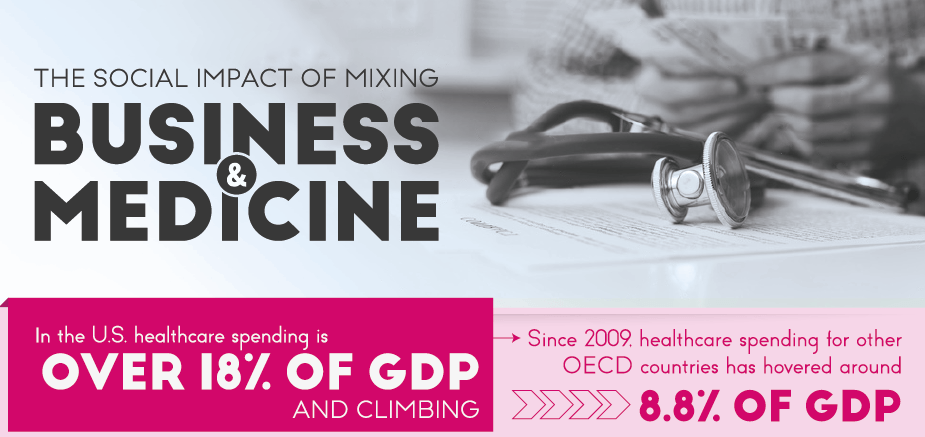American healthcare is an expensive business – healthcare spending in the U.S. is over 18% of GDP, and is still on the rise. From the years of 2007 to 2014, American healthcare spending went up by 20% and during this same time, the cost of hospitalization went up by 42%. Some life-saving medicines such as epipens and insulin shots have gone up by hundreds or even thousands of dollars, making those who need it have to pay more for their life-saving medicine. Health insurance is such a big business market that the top 5 largest health insurance companies and pharmacies in the U.S. brought in more total revenue than the top 5 tech companies – over $787 billion in 2019 alone. By 2027, healthcare spending in the U.S. is projected to reach over $6 trillion per year.
This high cost of healthcare is causing many to not go to the hospital or doctor and not follow up on advice or prescriptions. Americans, compared to Canadians, are 2 to 3 times more likely to ignore medical advice due to mainly cost. These high prices can cost more than money – each year 125,000 deaths could have been avoided if the patients chose to pursue treatment but didn’t do so because of cost. Texans are also having their claims for medicines, procedures, and tests denied by insurance companies causing them to either pay out of pocket, which can be exceedingly expensive, or choose to go without treatment, which can end up in hospitalization or worse. Going without treatment in the long run can end up costing more – for patients with chronic diseases, going without treatment can cost as much as $44,000 due to complications, hospital re-admittance, and worsening symptoms.
Learn about how shortages of supplies and exorbitant prices on healthcare and equipment is shaping how COVID-19 is hitting the U.S. and the overall social impact of mixing business and medicine here:


